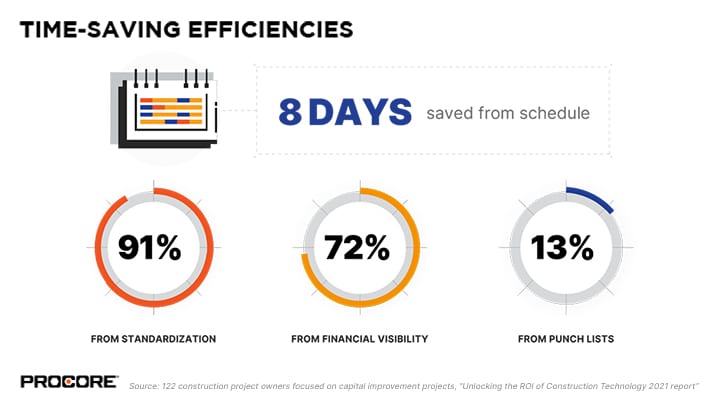To the owner immersed in an endless cycle of capital improvements—what worked when you were running 10 projects in 2019 will start to fracture when you’re running 40 projects in 2022. Best to get ahead of it now — before your portfolio outgrows your ability to manage its contents.
If you own or manage buildings or other assets, you are perpetually commissioning capital improvements (CI). These projects are typically spread among your assets, are of varying complexity, and have the habit of clamoring for your attention. The diversity of these projects tends to test the limits of your scheduling and resource allocation—from replacing a building’s façade to installing kitchen cabinets, and from improving a rooftop green space to replacing suddenly failed HVAC in a heatwave. As your teams hustle from asset to asset, your growing portfolio creates an ongoing cycle of assorted capital improvements, each with its own challenges and its own dataset.
This complexity is what makes standardization and clear process controls so important. The more varied and numerous your capital improvements, the more your data becomes illegibly spread and siloed among your many assets, projects, and vendors. This scattered project information defies clear tracking of your organization’s health, and denies you a real-time snapshot of your portfolio’s broad performance.
A best practice is to bring every stakeholder into a single platform — one that consolidates and reports on every aspect of real-time project statuses in a unifying system of record. Such a platform offers visibility and insight into each project, no matter the size.
Procore recently surveyed over 700 construction project owners, across an array of company types; from the largest real estate developers to school districts and from oil refineries to retail chains. 122 of those surveyed were focused primarily on capital improvement projects.
We asked a lot of questions about their use of construction technology, and published their responses in a new annual report. Those who worked primarily on capital improvements consistently mentioned four key areas in need of optimization.
- Time-saving efficiencies in all elements of the construction process
- Accurate and real-time financial visibility
- A better close out process, resulting in higher quality projects
- A standardized construction process

Time-Saving Efficiencies
Your time, and that of your teams, is incredibly valuable. Every construction project, marquee and otherwise, requires focused — and expensive — time and attention.
When everything is in the Procore platform, your team gains focus and uninterrupted productivity. Owner respondents working on capital improvements reported saving an average of two hours per day. These daily improvements have an aggregate effect on completion. Respondents owning capital improvement projects in the Procore platform reported saving an average eight days off their project schedules.
Better Financial Visibility
The more projects you have, the more dangerous and error-prone it is to have critical financial data scattered across spreadsheets managed by individual project managers. That’s where Procore comes in. In our survey, 72% of responding owners focused on capital improvements reported Procore’s financial tools help improve communication and transparency between the project management staff and the accounting staff. 63% reported more accurate forecasting when using Procore’s budget tools.
High-Quality Projects
High quality projects. That may seem like a bland and lofty term, but when you’re the owner, you have to make sure every completed project rises to your established bar of quality. Your reputation depends on it. A project run through a digital platform means tracking every close-out detail and contingency. Throughout the life-cycle of the project, your digital platform will also have been quietly building and maintaining a thorough, standardized project record, showing exactly what is left to address so you can finish the project with that satisfying sense of a door clicking shut.
Making sure the job is done right can improve quality throughout the entire project lifecycle, and these owners reported a 13% average decrease in the number of punch list items.
But the closeout process is simply a capstone to overall project quality. When looking at quality control generally, more than a third of respondents report decreased risk through Procore’s management of quality control.
Building Better Together With a Standardized Process
We’re talking about how to improve the entire lifecycle of capital improvements for your organization. As always, construction is about people and how they come together.
91% of capital improvement project owner respondents say that Procore helps them standardize processes across projects, providing a measurable level of consistency that drives every other improvement.
Leave a Reply